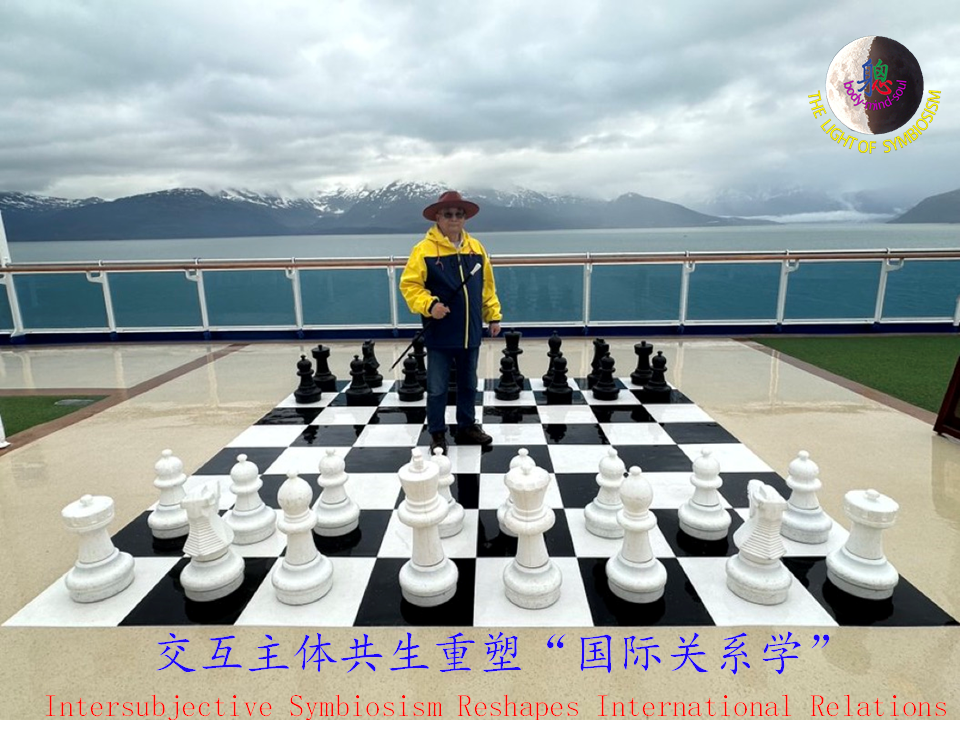作为“民生起点”的英国经济学传统
作为“民生起点”的英国经济学传统
The British Economic Tradition as the “Starting Point of People’s Livelihood”
——从普特尼辩论到共生经济学
— From the Putney Debates to Symbionomics
钱宏(Archer Hong Qian)
2025年9月 · 苏格兰 SKYE

一、普特尼辩论:经济与民生的奠基时刻(1647)
1647年,英国内战期间,新模范军在泰晤士河畔普特尼(Putney)举行大辩论:是否人人都有选举权?独立派与平等派代表首次把政治权利与经济民生结合起来讨论:土地归属、税收制度、劳动保障。第一次把普通士兵、佃农的经济处境上升为国家治理问题。其历史意义中,经济(Economy)首次被置于“公共生活的中心”,奠定了英国经济学传统的民生根基。
这是英国经济学思维的“民生起点”。

二、威廉·配第(William Petty,1623-1687):政治算术与国富视角
配第在《政治算术》(Political Arithmetick, 1690)中提出用数量化方法研究国家财政、人口、土地与劳动。他强调国家力量与社会生产的互动,是最早把经济学作为科学化研究的尝试:经济 ≠ 伦理说教,而是可测度、可计算的社会现象。
这是“经验主义—数量化”的经济学开端
三、约翰·洛克(John Locke,1632–1704):公私界限与财产权
洛克在《政府论·下篇》(Two Treatises of Government, 1689)中提出劳动创造财产的原则,阐明”财产不可公有、权力不可私有”,第一次明确了公私法权的界限。他把市场与政治秩序、个人自由直接联系起来,强调经济秩序与个人自由挂钩:劳动价值使自然物成为“我的”财产,政府存在的首要目的就是保护财产权。
这是“财产权经济学”的哲学奠基。
四、大卫·休谟(David Hume,1711–1776):货币、贸易与国际平衡
休谟在《政治论文集》(Political Discourses, 1752)中提出“价格—货币—贸易”机制,阐明货币流通对国际收支及国家兴衰的作用。他的经验主义方法,强调通过观察与逻辑分析理解经济现象。提出:货币数量论、贸易顺差批判,强调金银只是“流通工具”,真正的财富在生产与勤劳;把人性中的“激情与习惯”放进经济与社会运行逻辑。
这一“货币—贸易—人性”三者结合的分析框架,是“经验主义方法论”进入经济学的开始。
五、亚当·斯密(Adam Smith,1723–1790):分工、市场与道德哲学
斯密首先在《道德情操论》(1759)中强调同情心(sympathy)与道德情感的重要性,指出经济活动应服务于社会生活而非纯粹利益,市场不是冷冰冰的,而是嵌入道德情感的。在《国富论》(1776)提出分工与市场机制是推动财富增长的核心,突出强调分工、“看不见的手”、市场秩序的自组织。
这是“生命自组织—市场”奠基性思维原点。
六、大卫·李嘉图(David Ricardo,1772–1823):分配与比较优势
李嘉图在《政治经济学及赋税原理》(1817)提出比较优势理论,同时分析地租、工资与利润的分配关系,使经济学既具国际贸易互利共赢意义,又关注社会分配冲突:地租、工资、利润三分法,直接关联社会阶层利益。
这是首次把全球化的“劳动—分配—贸易”确立为宏观与微观研究的双重核心。
七、杰里米·边沁(Jeremy Bentham, 1748–1832):功利主义与幸福尺度
边沁在《道德与立法原理导论》(1789)确立功利主义,提出“最大多数人的最大幸福”,为经济政策提供伦理标准,提倡法制与制度改革,打通经济学与公共政策,第一次把幸福作为衡量经济的价值尺度。
这是“制度设计—社会福利”的实践导向。
八、阿尔弗雷德·马歇尔(Alfred Marshall, 1842–1924):生活科学的经济学
马歇尔在《经济学原理》(1890)中把经济学定义为“研究人类在日常生活中如何谋求福利的科学”,既重视短期,也重视长期的产业演进:强调均衡、边际效用、部分均衡分析“时间因素”,对供需、弹性及福利的重要性,奠定新古典经济学的框架。
他使经济学从“政治经济学”转化为现代的“经济科学”,在斯密—李嘉图的宏观传统与之后的微观分析之间架起桥梁。
九、约翰·梅纳德·凯恩斯(John Maynard Keynes, 1883–1946):需求、货币与政府责任
凯恩斯早在《货币改革论》(1923)和《货币论》(1930)中分析货币流动性与利率对投资的作用。在《就业、利息和货币通论》(1936)提出有效需求理论,回应大萧条,批判“市场自动出清”,提出“有效需求不足”理论,认为市场并非自动均衡,需要政府通过财政与货币政策保障就业和经济稳定:提出总需求、乘数效应、财政赤字政策,从而把国家重新带回市场秩序核心,构建“福利国家”与二战后布雷顿森林体系的理论支柱,也把货币从“单纯交换媒介”转变为“宏观调控核心”,从而奠定了现代中央银行与财政—货币双支柱治理框架。
把“政府—市场—就业”确立为现代宏观经济学的三大支点。
十、英国经济学的完整线索及当代问题

1. 普特尼辩论:政治权利与经济公平 → 民生起点
2. 配第:政治算术 → 经验与数量化
3. 洛克:财产权与有限政府 → 财产权哲学
4. 休谟:货币数量论、人性逻辑 → 货币—贸易—人性
5. 斯密:分工与道德情感 → 市场自组织
6. 李嘉图:比较优势与分配理论 → 全球化逻辑
7. 边沁:功利主义与制度改革 → 制度设计
8. 马歇尔:供求均衡与边际分析 → 新古典体系
9. 凯恩斯:有效需求和供给与政府干预 → 宏观调节
一条英国经济学思维的谱系,基本就是:政治权利起点 → 财产权与自由 → 市场与道德 → 全球贸易与分配 → 功利制度 → 均衡科学化 → 政府宏观与市场微观调节的结合。可以说,从早期内战时期的民生政治经济起点,到 20 世纪的宏观治理,英国经济学既是哲学思考的延伸,也是应对国家政治经济文化危机的工具。

总之,整条线索展现出英国经济学思维的独特性:它不仅有抽象的学理甚至数理推演,而且是伴随宪政、市场与社会变迁的“政治—道德—经济”生活一体化的探索。然而,由于20世纪以来全球意识形态混杂与认知偏蔽,这一探索逐渐脱离了人类“生活-生態-生命”的常识与“家庭第一、社区优先、政府服务”的传统,为特权逐利大开方便之门,也为各个国家和区域及普通國民政治、经济、文化行为滑向“通往奴役之路”提供了大量范本。
于是,当代经济学家们只是用不同方式解释,在社会与国际分工中有没有“免费的午餐”,并围绕着多重“两极分化”及其供需义利矛盾,讲述着新老“资本论”的故事;他们不仅让自己陷入“市场自由与政府管控世纪钟摆周期性困境”,也让世界徒生出各种分裂与冲突。然而问题在于,追求高额资本增殖,却脱离生活常態的生产,已然超出自然、社会、人的身心灵健康可承受极限,那么,超系统改变,何以可能?
这就是共生经济学面对的问题。
十一、作为“民生起点”的传统与共生经济学再出发
从普特尼辩论经斯密到凯恩斯,英国经济学一以贯之的特征是:
经济即民生:经济学从来不是抽象算术,而是公共生活的秩序。
财富为幸福:生产与分配的意义在于改善人民生活,而非权力积累。
国家与市场的平衡:无论是配第、斯密还是凯恩斯,目的都是服务社会。
进入AI与新全球化时代,我们需要在这一传统上再出发,迈向新阶段:
生产必须回归生活,生活需要呈现生态,生态才能激励生命。
共生经济学新理念结合AI与数据驱动,可能促进以下五个层面的工作:
第一、从“政治算术”到数据驱动的共生分析 威廉·配第的“政治算术”开启了量化的经济学研究。进入AI时代,数据分析与机器学习可以进一步深化对“国家—财富—人口”交互的理解。例如,通过实时分析全球供应链、资源分配与生态影响,AI可以帮助识别“健康黄金率”的量化指标,优化生产与生态的平衡。
第二、市场与生态的动态平衡 亚当·斯密的“市场自组织”与“生命自组织”在发生学、动力学上的表里关系。AI可以通过模拟复杂系统(如家庭、社区、市场、生态、社会网络),预测市场失灵或生态危机的潜在风险。例如,AI模型可以分析资源效能、资源消耗与经济增长、经济健康的关系,为政策制定提供数据支持,推动“生态—经济”共生。
第三、幸福与福利的重新定义 边沁的“最大幸福”原则在AI时代需要交互主体共生的新诠释。AI可以通过多维数据(如综合反应个体生命自组织连接顺畅度、健康生活、心智教育、灵魂安顿“六大资产/资源负债表”)构建更全面的“幸福指数”,超越传统GDP指标,助力共生经济学以“健康黄金率”为基准,优化资源效能的GDE指标。
第四、政府与市场的AI协同 凯恩斯的政府干预理论在AI时代可以进一步扩展优化。AI可以辅助政府进行精准的财政与货币政策设计,例如通过预测模型优化就业支持、基础设施投资或循环经济转型计划。同时,AI也能通过区块链等技术增强市场透明度,减少信息不对称,助力自洛克-哈耶克公私界线恊和平衡,以走出“市场自由与政府管控的周期性世纪钟摆困境”。
第五、共生经济学的全球实践 共生经济学强调“生活-生态-生命”的连接平衡,可以重新调节全球可持续发展目标(SDGs)。AI可以通过跨国数据整合,分析自由贸易不平衡、国别政治冲突与社会不平等的交互影响,超越“蒙代尔-罗德里克-钱宏三元难题”,推动基于“共生逻辑”的国际有效互动。例如,AI可以优化全球能源网络,平衡国别、区域性“外生逻辑”与“内生逻辑”的能源分配与交换。
这就是共生经济学(Symbionomics):继承英国经济学传统的“民生起点”,以生命自组织连接平衡的交互主体共生逻辑,以健康黄金率为基准,规范人类政治、经济、文化三位一体行为开辟的新方向。
参看:《共生经济学:21世纪人类政治经济组织行为的经济学因应之道》共生网 http://symbiosism.com.cn/7695.html
《在又一个世纪的转折点上:哲学-共生经济学笔记(提要、梗概)》(2020, http://symbiosism.com.cn/3876.html
《AI时代的亚当·斯密:共生经济学的再出发》 http://symbiosism.com.cn/10823.html
The British Economic Tradition as the “Starting Point of People’s Livelihood”
— From the Putney Debates to Symbionomics
Hong Qian (Archer Hong Qian)
September 2025 · Skye, Scotland
I. The Putney Debates: The Foundational Moment for Economics and People’s Livelihood (1647)
In 1647, during the English Civil War, the New Model Army held a historic debate on the banks of the Thames in Putney: Should everyone have the right to vote? Representatives of the Independents and Levellers, for the first time, linked political rights with economic livelihood, discussing land ownership, taxation systems, and labor protections. The economic conditions of ordinary soldiers and tenant farmers were elevated to matters of national governance. Historically, this placed the economy at the “center of public life,” laying the foundation for the British economic tradition rooted in people’s livelihood. 👉 This marks the “starting point of people’s livelihood” in British economic thought, inspiring modern data-driven analyses of public welfare.
II. William Petty (1623–1687): Political Arithmetic and the Perspective of National Wealth
In Political Arithmetick (1690), Petty proposed quantifying national finances, population, land, and labor, emphasizing the interplay between state power and social production. His work pioneered the scientific study of economics: economics is not moral preaching but a measurable and calculable social phenomenon. 👉 This is the origin of “empiricism and quantification” in economics, extended today by AI and big data for optimizing resource allocation.
III. John Locke (1632–1704): Public-Private Boundaries and Property Rights
In Two Treatises of Government (1689), Locke articulated the principle that labor creates property, asserting that “property cannot be public, but power cannot be private,” clearly delineating the boundaries between public and private rights. He linked markets with political order and individual freedom, emphasizing that economic order hinges on personal liberty: labor transforms natural resources into “my” property, and the primary role of government is to protect property rights. 👉 This is the philosophical foundation of “property rights economics,” inspiring blockchain applications for transparent property systems.
IV. David Hume (1711–1776): Money, Trade, and International Balance
In Political Discourses (1752), Hume introduced the “price-money-trade” mechanism, elucidating the role of money circulation in international balance of payments and national prosperity. His empiricist approach emphasized understanding economic phenomena through observation and logical analysis. He proposed the quantity theory of money, critiqued trade surpluses, and argued that gold and silver are mere “tools of circulation,” with true wealth lying in production and diligence. He integrated human “passions and habits” into the logic of economic and social operations. 👉 This framework combining “money-trade-human nature” marks the entry of empiricist methodology into economics, enhanced by AI-driven global trade analytics.
V. Adam Smith (1723–1790): Division of Labor, Markets, and Moral Philosophy
In The Theory of Moral Sentiments (1759), Smith highlighted the importance of sympathy and moral sentiments, arguing that economic activities should serve social well-being, not mere profit. Markets, he suggested, are not cold mechanisms but embedded in moral emotions. In The Wealth of Nations (1776), he identified the division of labor and market mechanisms as the core drivers of wealth creation, emphasizing self-organization through the “invisible hand” and market order. 👉 This is the foundational origin of “life self-organization and markets,” with AI enabling simulations of market-ecosystem balance.
VI. David Ricardo (1772–1823): Distribution and Comparative Advantage
In On the Principles of Political Economy and Taxation (1817), Ricardo introduced the theory of comparative advantage and analyzed the distribution of rent, wages, and profits. His work gave economics both a global trade perspective, promoting mutual gains, and a focus on social distribution conflicts, linking rent, wages, and profits to class interests. 👉 This established “production-distribution-trade” as the dual core of macro and microeconomic analysis, with AI aiding equitable global supply chain analysis.
VII. Jeremy Bentham (1748–1832): Utilitarianism and the Measure of Happiness
In An Introduction to the Principles of Morals and Legislation (1789), Bentham established utilitarianism, advocating “the greatest happiness for the greatest number” as an ethical standard for economic policy. He connected economics with public policy through legal and institutional reforms, introducing happiness as a measure of economic value. 👉 This is the practical orientation of “institutional design and social welfare,” with AI enabling multidimensional happiness indices beyond GDP.
VIII. Alfred Marshall (1842–1924): Economics as the Science of Life
In Principles of Economics (1890), Marshall defined economics as “a study of mankind in the ordinary business of life” to achieve well-being. He emphasized short- and long-term industrial evolution, equilibrium, marginal utility, and partial equilibrium analysis with a focus on time factors, laying the foundation for neoclassical economics through supply, demand, elasticity, and welfare. 👉 He transformed political economy into modern “economic science,” bridging macro and micro traditions, with AI enhancing supply-demand forecasting.
IX. John Maynard Keynes (1883–1946): Demand, Money, and Government Responsibility
Keynes analyzed money liquidity and interest rates’ impact on investment in A Tract on Monetary Reform (1923) and A Treatise on Money (1930). In The General Theory of Employment, Interest, and Money (1936), he addressed the Great Depression with the theory of effective demand, rejecting the notion of automatic market clearing. He argued that markets do not self-equilibrate and require government intervention through fiscal and monetary policies to ensure employment and stability. His concepts of aggregate demand, the multiplier effect, and deficit spending reintroduced the state as central to market order, underpinning the welfare state and the post-WWII Bretton Woods system. He transformed money from a mere medium of exchange to a core tool of macroeconomic management, establishing the modern framework of central banking and dual fiscal-monetary governance. 👉 He established “government-market-employment” as the three pillars of modern macroeconomics, with AI enabling precise policy design.
X. The Complete Thread of British Economics and Contemporary Challenges
Putney Debates: Political rights and economic fairness → The starting point of people’s livelihood
Petty: Political arithmetic → Empiricism and quantification
Locke: Property rights and limited government → Property rights philosophy
Hume: Quantity theory of money and human logic → Money-trade-human nature
Smith: Division of labor and moral sentiments → Market self-organization
Ricardo: Comparative advantage and distribution → Globalization logic
Bentham: Utilitarianism and institutional reform → Institutional design
Marshall: Supply-demand equilibrium and marginal analysis → Neoclassical system
Keynes: Effective demand and government intervention → Macroeconomic regulation
This lineage of British economic thought reflects a progression from the political-economic starting point of people’s livelihood during the Civil War to 20th-century macroeconomic governance. It is both an extension of philosophical inquiry and a tool for addressing political, economic, and cultural crises. The uniqueness of British economics lies in its integration of abstract theory, mathematical reasoning, and the exploration of a “politics-morality-economy” continuum, shaped by constitutional, market, and social transformations.
However, since the 20th century, global ideological complexities and cognitive biases have led this tradition to drift from the commonsense principles of “life-ecology-humanity” and the priorities of “family first, community priority, government as service.” This drift has opened the door to elite profiteering and provided models for political, economic, and cultural behaviors that lead nations and individuals toward “the road to serfdom.” Contemporary economists debate whether there is a “free lunch” in social and international divisions of labor, grappling with polarization and supply-demand conflicts. Yet, the pursuit of capital accumulation, detached from everyday life, has exceeded the limits of natural, social, and human well-being. How, then, can systemic change be achieved? 👉 This is the challenge Symbionomics seeks to address.
XI. The Tradition of “People’s Livelihood” and the New Departure of Symbionomics
From the Putney Debates through Smith to Keynes, the British economic tradition consistently emphasizes:
Economics as livelihood: Economics is not abstract arithmetic but the order of public life.
Wealth for happiness: The purpose of production and distribution is to improve people’s lives, not to amass power.
Balance of state and market: From Petty to Smith to Keynes, the goal is to serve society.
In the era of AI and new globalization, we must build on this tradition and advance to a new stage: Production must return to life, life must reflect ecology, and ecology must inspire life.
Symbionomics, combined with AI and data-driven approaches, can advance the following five dimensions:
From Political Arithmetic to Data-Driven Symbiotic Analysis: Petty’s quantification pioneered economic study. In the AI era, data analytics and machine learning can deepen understanding of “state-wealth-population” interactions. For instance, AI can analyze global supply chains, resource allocation, and ecological impacts in real time to identify quantitative indicators for a “healthy golden ratio,” optimizing production-ecology balance.
Dynamic Balance of Markets and Ecology: Smith’s “market self-organization” aligns with the “life self-organization” of Symbionomics. AI can simulate complex systems (e.g., families, communities, markets, ecosystems, social networks) to predict market failures or ecological crises. For example, AI models can analyze resource efficiency, consumption, and economic growth to support policies for “ecology-economy” symbiosis.
Redefining Happiness and Welfare: Bentham’s “greatest happiness” principle requires a new interpretation in the AI era. AI can construct comprehensive “happiness indices” using multidimensional data (e.g., health, education, mental well-being, spiritual fulfillment) to transcend GDP and support Symbionomics’ focus on the “healthy golden ratio” for resource efficiency (GDE metrics).
AI-Supported State-Market Synergy: Keynes’ interventionist theory can be extended in the AI era. AI can assist governments in designing precise fiscal and monetary policies, such as optimizing employment support, infrastructure investment, or circular economy transitions. Technologies like blockchain can enhance market transparency, reduce information asymmetry, and balance the public-private divide from Locke to Hayek, escaping the “market freedom vs. government control” pendulum trap.
Global Practice of Symbionomics: Symbionomics’ emphasis on “life-ecology-humanity” aligns with global sustainable development goals (SDGs). AI can integrate cross-national data to analyze trade imbalances, political conflicts, and social inequalities, overcoming the “Mundell-Rodrik-Qian trilemma” and fostering international cooperation based on symbiotic logic. For example, AI can optimize global energy networks, balancing exogenous and endogenous energy allocation across nations and regions.
Symbionomics inherits the “people’s livelihood” foundation of British economics, using life self-organization to connect balanced, symbiotic interactions among agents. With the “healthy golden ratio” as its benchmark, it charts a new path for integrating human political, economic, and cultural behaviors. (See “Eight Transformations” for details.)
References:
Symbionomics: The Economic Response to Human Political and Economic Behavior in the 21st Century, Symbiosism Network, http://symbiosism.com.cn/7695.html
At Another Century’s Turning Point: Notes on Philosophy and Symbionomics (Summary and Outline), Symbiosism Network, http://symbiosism.com.cn/3876.html
Adam Smith in the AI Era: The New Departure of Symbionomics, Symbiosism Network, http://symbiosism.com.cn/10823.html
